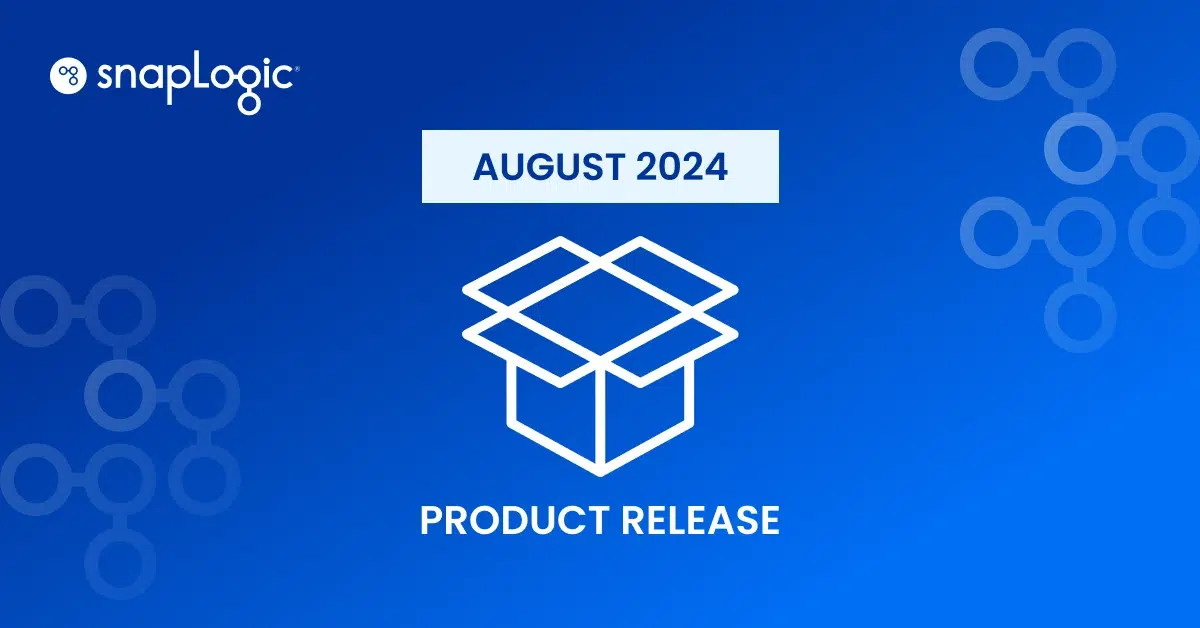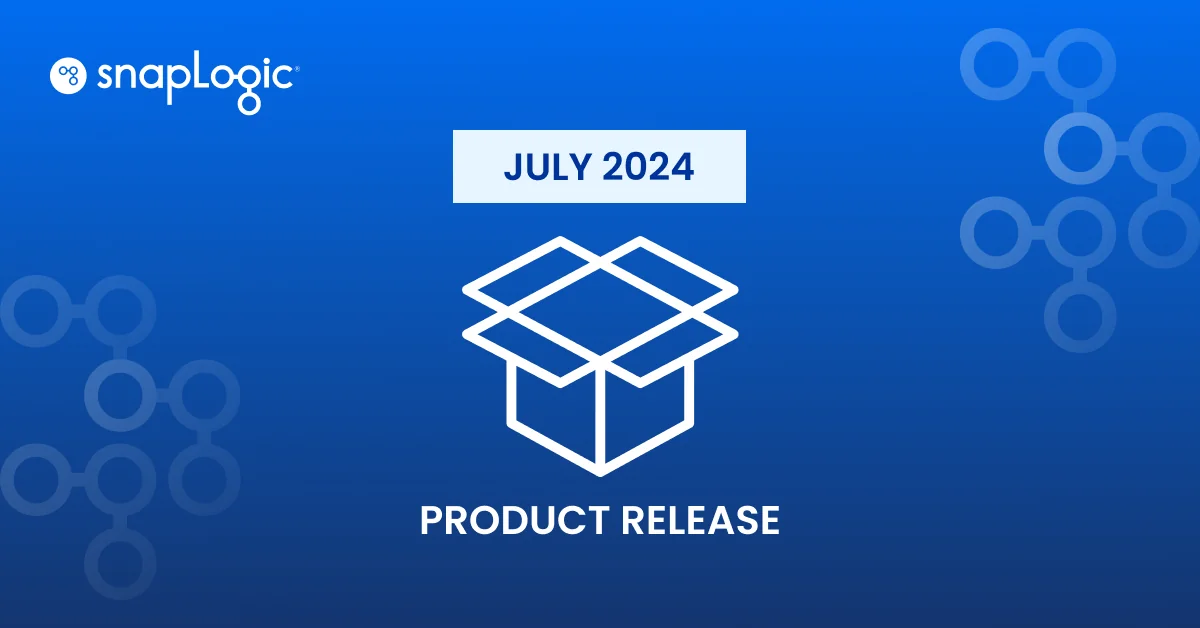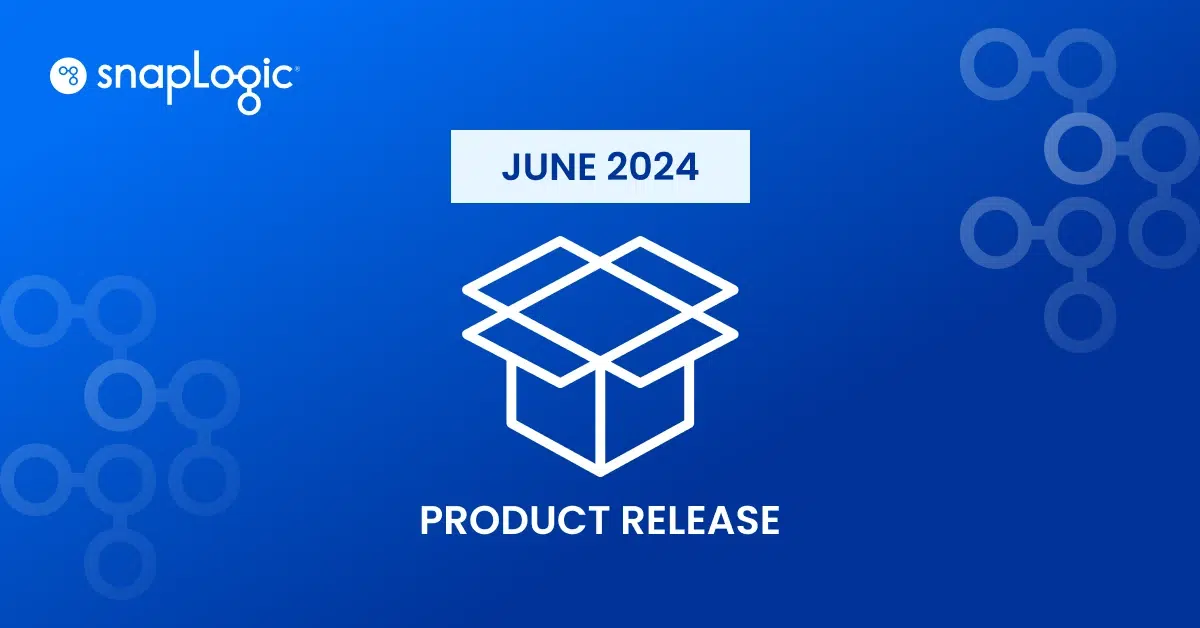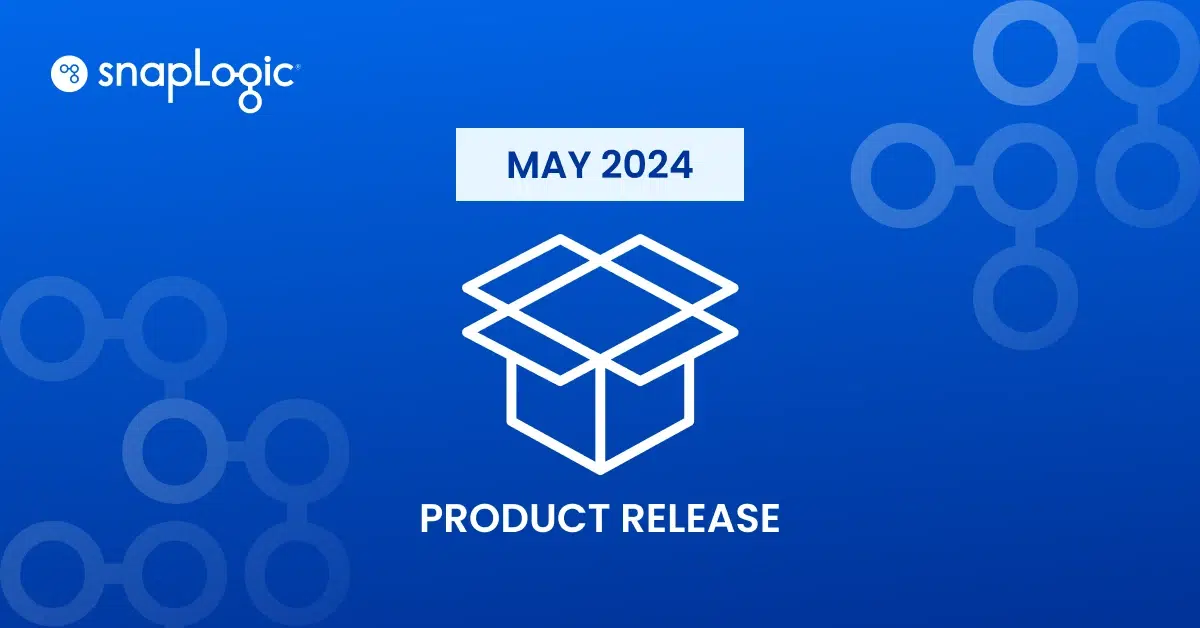The August 2024 release of the SnapLogic platform is here! This release brings:
- Generative integration updates that include support of Google Gemini LLM to power your applications and support for managed RAG services from OpenAI and Amazon Bedrock so you can efficiently build LLM-based applications that leverage any knowledge base
- New Snaps for better performance and automation of your data workloads in Oracle and Databricks
- New public APIs to check pipeline quality that make pipelines/workflows more resilient and easy to use
- API Management enhancements that improve security and performance
Let’s look at the August release highlights.
Build RAG applications efficiently with GenAI updates
The generative integration space is rapidly evolving and we want to move fast with it to give you the connectivity options you need to power your enterprise use cases.
Retrieval Augmented Generation (RAG) is a technique used to improve the quality of LLM responses by providing the LLM with additional context such as an authoritative knowledge base. With GenAI App Builder, customers can build powerful RAG-based GenAI applications but the process can be a bit overwhelming for some organizations. With the August release, we are adding support for managed RAG services from OpenAI and Amazon Bedrock so you can reduce complexity when building RAG-based applications.
New Snaps added to the OpenAI LLM Snap Pack enable you to interact with OpenAI’s Assistant, a managed RAG service, using the Assistants API. Before leveraging Snaps, a user needs to create an Assistant in OpenAI and provide it with additional context through its ‘File Search’ capability. After that, you can create a context, called Thread, that stores a message history. You can run the Thread by assigning an existing Thread to an Assistant and by adding messages to it.
New Snaps in the Amazon Bedrock LLM Snap Pack allow you to interact with AWS’s managed RAG service, called Knowledge Base, and invoke Bedrock Agents. An agent in their simplest form allows you to break down and orchestrate a multi-step business process using natural language. Agents can connect securely to your company’s data source and supplement the user request for more relevant responses. We have added ‘Agent Retrieve’ and ‘Agent Retrieve and Generate’ Snaps to perform a query with the agent and then generate a response using a specific model.
In the August release of the SnapLogic platform, we have also added support for the GenAI offering from the third major cloud provider: Google. Google GenAI LLM Snap Pack allows you to interact with the Google Gemini and helps you:
- Generate a prompt from a specific template in the Mustache template format
- Create an embedding vector based on the additional context data
- Generate text to create content and generate responses
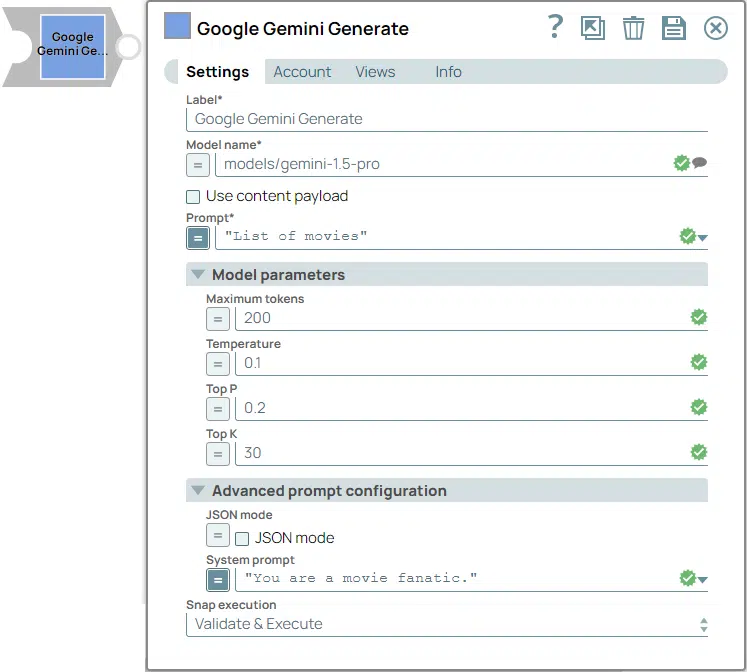
New Snaps for improved performance and automation
Get 10x performance with Oracle Parallel Load
As data volumes at organizations continue to grow, we have a brand new Oracle Parallel Load Snap to move data to the Oracle database even more efficiently. Earlier we provided Oracle Bulk Load Snap, which is very performant, but it relies on the Oracle SQL Loader application which needs to be installed on the customer plex. Oracle Parallel Load ingests documents, stores contents in a holding area, and then loads data to an Oracle database via multiple threads, improving performance by 6 – 10x.
Automate Databricks jobs
A new ‘Databricks – Run Job’ Snap executes a set of tasks or processes within a Databricks workspace to give you a single UX for your data workloads. Unlike Databricks Execute Snap, which runs multiple queries, this Snap allows you to run Databricks Jobs which can automate the execution of any complex data processing, machine learning, or data analytics task, whether it is the execution of a Databricks Notebook or a Spark job.
Learn more about the several other enhancements to the existing Snaps.
Better observability with graph node view

We have redesigned the graph view for SnapLogic nodes so you can learn more about your environment instantly. Bars represent average memory, CPU, and disk utilization while the colored carets indicate maximum values in the selected period. Bars and Carets are color-coded so that you can quickly act on plexes that need your immediate attention.
Better pipeline quality with an enhanced public API
SnapGPT has been helping users like you improve the quality of your pipelines with the ‘Analyze Pipeline’ feature. We are now bringing the same skill to our public APIs. With this public API, organizations can insert the pipeline quality check into their CI/CD process for integration pipelines so that they can ensure that every workflow/pipeline meets a certain quality threshold.
Enhanced security and response quality for your managed APIs
Secrets Managers provide a seamless and secure way to manage secrets in organizations. You can now leverage a secrets manager to manage API Keys and reference them when configuring API policies. Secrets Managers, with their automated rotation of keys, greatly improve your API security.
Another APIM enhancement in the August release greatly improves response quality and API consumer experience. You can now invalidate old cache entries to make sure that your APIs are providing the latest and most accurate results for API requests. And by improving data quality and freshness, you can ensure a superior experience for your API consumers.
To learn more about the August 2024 Release, please check out the release notes or contact the customer success team.





